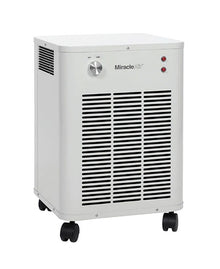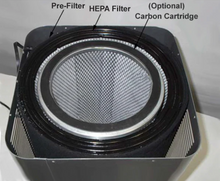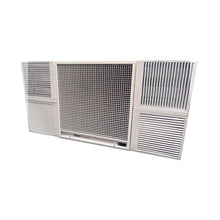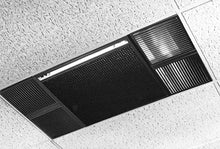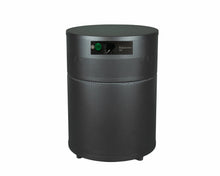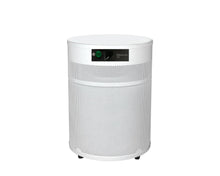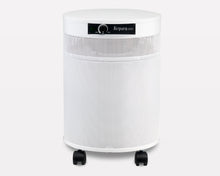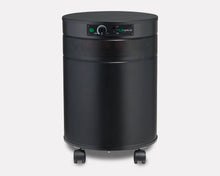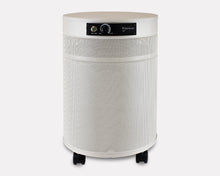How to Choose an Air Purifier for Wildfire Season That Works Year-Round: A Complete Guide to Multi-Purpose Indoor Air Quality Solutions
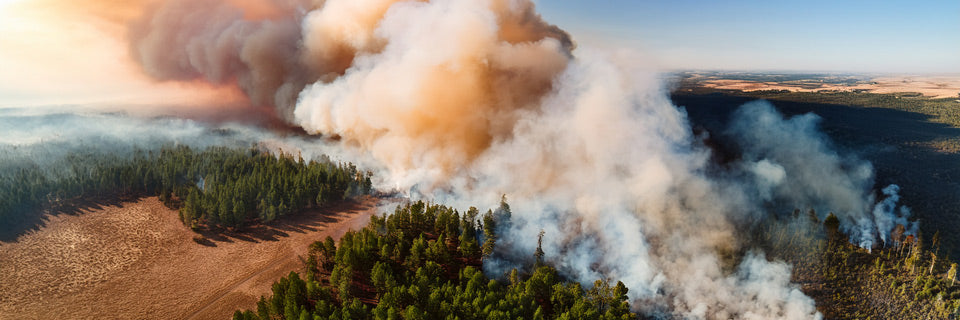
Published by Commercial Air Purifiers, LLC | August 21, 2025
Every summer, millions of Americans find themselves trapped indoors as wildfire smoke transforms their neighborhoods into hazy, hazardous environments. If you've ever watched orange skies settle over your community while checking air quality apps obsessively, you know the anxiety of wondering whether your indoor air is truly safe. The question isn't just about surviving wildfire season anymore—it's about choosing an air purification solution that protects your family during smoke events while continuing to improve your indoor air quality throughout the entire year.
The good news? You don't need separate devices for different air quality challenges. The right air purifier can excel at filtering wildfire smoke particles while simultaneously addressing everyday pollutants like dust, allergens, pet dander, and volatile organic compounds. Understanding how to choose a versatile, high-performance unit will give you both immediate protection during smoke events and long-term health benefits every day of the year.
The Growing Reality of Wildfire Smoke and Indoor Air Quality
Wildfire seasons have intensified dramatically over the past decade, with smoke now affecting regions thousands of miles from actual fires. The EPA recently updated its Air Quality Index standards, lowering the threshold for "good" air quality from 12 µg/m³ to 9 µg/m³ for PM2.5 particles, reflecting our growing understanding of how even low levels of fine particulate matter impact human health.
Wildfire smoke contains an especially dangerous cocktail of pollutants. The most concerning are PM2.5 particles—ultra-fine particulates measuring 2.5 micrometers or smaller that can penetrate deep into your lungs and enter your bloodstream. These particles carry toxic compounds from burning vegetation, structures, and synthetic materials, creating health risks that extend far beyond typical seasonal allergies.
But here's what many people don't realize: the same filtration technology that protects you from wildfire smoke also addresses the indoor air quality challenges you face year-round. Your home accumulates PM2.5 particles daily from cooking, cleaning products, outdoor pollution, and countless other sources. A properly chosen air purifier becomes your comprehensive defense system, not just your emergency backup plan.
Understanding HEPA Filtration: Your Foundation for All-Season Protection
The science behind effective air purification centers on High-Efficiency Particulate Air (HEPA) filtration. As Johns Hopkins Bloomberg School of Public Health environmental professor Ana María Rule explains, "You want to make sure it has a HEPA-certified filter because that means it will be effective on these really small particles that can penetrate your lungs."
True HEPA filters must meet strict standards, capturing 99.97% of particles 0.3 micrometers and larger. This isn't arbitrary—0.3 micrometers represents the "most penetrating particle size" where filtration is most challenging. HEPA filters trap particles as small as 0.3 microns with 99 percent efficiency, and since smoke particles are typically within this size range, HEPA filters are excellent for removing smoke from the air.
Research consistently demonstrates HEPA effectiveness across various indoor air challenges. Studies show HEPA purifiers can reduce indoor PM2.5 concentrations by approximately 50–80%, even in countries with relatively high ambient pollution levels, proving their value extends far beyond emergency wildfire protection.
When evaluating air purifiers, ensure you're getting genuine HEPA filtration, not "HEPA-like" or "HEPA-type" alternatives. True HEPA units filter out 99.7% of particles down to 0.3 micrometers, while some units only filter down to 3 micrometers—which means they do NOT filter out smoke.
Beyond HEPA: Multi-Stage Filtration for Comprehensive Year-Round Protection
While HEPA filtration handles particulates excellently, wildfire smoke and everyday indoor air quality issues involve more than just particles. Smoke contains volatile organic compounds (VOCs), gases, and odor-causing molecules that pass right through HEPA filters. This is where multi-stage filtration systems prove their worth for year-round use.
The most effective air purifiers combine HEPA filtration with activated carbon filters, creating a comprehensive approach to indoor air quality. Activated carbon uses adsorption to capture gases, odors, and chemical compounds that HEPA filters miss. During wildfire events, this means eliminating the acrid smell and harmful gases accompanying smoke particles. Throughout the year, carbon filtration addresses cooking odors, cleaning product fumes, off-gassing from furniture and building materials, and other chemical pollutants.
Some advanced units incorporate additional filtration stages, such as pre-filters that extend HEPA filter life by capturing larger particles, UV-C light for microbial control, or ionization for ultra-fine particle removal. While these features can add value, focus primarily on robust HEPA and activated carbon filtration as your foundation.
Consider your specific environment when evaluating multi-stage options. Homes with pets benefit significantly from enhanced odor control, while areas with high outdoor pollution might prioritize maximum particle removal efficiency. The beauty of choosing a well-designed multi-stage system is that it adapts to changing conditions—protecting you from wildfire smoke when needed while continuously improving your everyday air quality.
Sizing Your Air Purifier: Room Coverage and Air Changes Per Hour
Proper sizing makes the difference between effective air purification and expensive disappointment. Air purifier effectiveness depends not just on filter quality, but on moving enough air through those filters to actually clean your space.
Research emphasizes that adequate air cleaner machine numbers, appropriate airflow, and window ventilation limitations are important to achieve the best efficacy of HEPA air cleaners. This means understanding both your room size and how quickly you need air cleaned.
Air purifiers are typically rated by room size (square footage) and Clean Air Delivery Rate (CADR), which measures how much filtered air the unit produces per minute. For wildfire smoke protection, aim for units that can achieve 4-5 air changes per hour in your space. This means the purifier processes your room's entire air volume 4-5 times hourly, providing rapid response to smoke infiltration.
To calculate your needs, multiply your room's length, width, and ceiling height to get cubic footage, then divide by 12-15 minutes to determine required CADR. For example, a 200 square foot room with 8-foot ceilings contains 1,600 cubic feet of air. To achieve 5 air changes per hour, you need a CADR of approximately 133 cubic feet per minute.
Don't forget to consider your home's layout. Open floor plans require higher-capacity units or multiple strategically placed purifiers. During wildfire events, you might consolidate your family into one well-protected room with a properly sized unit rather than trying to purify your entire home with an undersized device.
Smart Features and Controls: Enhancing Convenience and Effectiveness
Modern air purifiers incorporate intelligent features that optimize performance while making operation effortless. These smart capabilities prove especially valuable when juggling wildfire response with daily air quality management.
Air quality sensors automatically adjust purifier speed based on real-time pollution levels, ramping up during cooking or when outdoor air quality deteriorates. This responsiveness means your unit works harder during wildfire events while conserving energy and reducing noise during normal conditions.
Smart connectivity allows remote monitoring and control through smartphone apps. You can check your home's air quality from work, receive alerts when pollution spikes, and adjust settings before arriving home. During wildfire season, this connectivity enables proactive responses to changing conditions without constantly monitoring air quality websites.
Scheduling features optimize energy usage and noise management, running units at higher speeds during unoccupied hours while maintaining quieter operation when you're sleeping or working. Some advanced models integrate with smart home systems, automatically responding to air quality data from multiple sources.
Filter replacement indicators take the guesswork out of maintenance, ensuring optimal performance year-round. Given that filter life varies dramatically based on usage and air quality conditions, these smart reminders prevent the common mistake of running units with compromised filters during critical periods.
Maintenance and Filter Replacement: Maximizing Long-Term Value
Proper maintenance transforms your air purifier from a single-season investment into a long-term health asset. Understanding maintenance requirements helps you choose units that remain cost-effective and perform reliably year after year.
HEPA filter replacement frequency depends heavily on usage conditions. During intense wildfire smoke events, filters may require replacement within weeks due to heavy particle loading. Under normal conditions, quality HEPA filters typically last 6-12 months. However, research shows that maintaining adequate airflow is crucial for HEPA air cleaner effectiveness, so don't extend replacement intervals beyond manufacturer recommendations.
Activated carbon filters generally need more frequent replacement than HEPA filters, especially in homes with significant odor sources or during extended wildfire exposure. Some units use washable pre-filters that extend primary filter life by capturing larger particles before they reach HEPA media.
Calculate total ownership costs including replacement filters when comparing units. Cheaper air purifiers often use proprietary filters with high replacement costs, while quality brands typically offer more affordable, readily available filter options. Consider the availability of third-party compatible filters, which can significantly reduce long-term costs without compromising performance.
Keep spare filters on hand, especially during wildfire season when replacement filters may become scarce due to increased demand. Store filters in their original packaging in a cool, dry location to maintain their effectiveness.
Making Your Decision: Specialized vs. Multi-Purpose Units
The choice between specialized wildfire units and multi-purpose air purifiers often creates unnecessary confusion. The reality is that the most effective wildfire smoke protection comes from the same technology that provides excellent year-round air quality improvement.
Specialized "wildfire" units typically emphasize powerful HEPA filtration and activated carbon, exactly what you need for comprehensive indoor air quality management. These units excel during smoke events because they move large volumes of air through high-efficiency filters quickly, but this same capability makes them highly effective against everyday pollutants.
Multi-purpose units with robust HEPA and carbon filtration, proper sizing for your space, and intelligent controls provide the best value proposition. They protect you during wildfire emergencies while continuously improving your indoor environment, addressing allergens, pet dander, cooking odors, and other common air quality challenges.
Consider units that offer multiple fan speeds and operating modes, allowing you to optimize performance for different situations. Quiet overnight operation for better sleep, medium speeds for general air quality maintenance, and maximum power for rapid response to smoke infiltration or other air quality emergencies.
The key is choosing quality over marketing claims. Focus on verified HEPA certification, adequate activated carbon capacity, appropriate sizing for your space, and reliable construction from reputable manufacturers. These fundamentals matter more than whether a unit is marketed specifically for wildfire protection.
Health Benefits: Why Year-Round Air Purification Matters
The health benefits of quality air purification extend far beyond wildfire protection, making year-round operation a valuable investment in your family's wellbeing. Current evidence demonstrates that using portable air purifiers results in short-term reductions in PM2.5 in the indoor environment, which has the potential to offer health benefits.
Fine particulate matter from all sources contributes to respiratory issues, cardiovascular problems, and other health concerns. By maintaining consistently low indoor PM2.5 levels, air purifiers help reduce your cumulative exposure to harmful particles whether they originate from wildfire smoke, traffic pollution, or indoor sources.
For people with asthma, allergies, or other respiratory conditions, consistent air purification can significantly improve daily quality of life. Research on portable air purifiers specifically highlights their effectiveness in mitigating wildfire smoke harms for people with asthma, but these same benefits apply to managing other respiratory triggers year-round.
Children and elderly family members are particularly vulnerable to air pollution effects, making whole-house or multi-room air purification especially valuable for protecting the most sensitive household members. Quality air purifiers create safer indoor environments for everyone while providing crucial protection during wildfire emergencies.
Practical Implementation: Setting Up Your Year-Round Air Quality System
Successfully implementing air purification requires strategic placement and realistic expectations about coverage and limitations. Start by identifying your most critical spaces—typically bedrooms where you spend 6-8 hours nightly, plus main living areas where your family congregates.
During wildfire events, consider creating a "clean room" strategy where you focus maximum protection in one space rather than trying to purify your entire home inadequately. Choose a room that can be sealed relatively well, install your most powerful air purifier, and use this space as your family's safe haven during severe smoke events.
For year-round effectiveness, position air purifiers away from walls and obstacles that impede airflow, but avoid high-traffic areas where they might be knocked over or damaged. Maintain at least 3 feet of clearance around units to ensure proper air circulation.
Remember that air purifiers complement, not replace, other air quality strategies. During wildfire events, keep windows and doors closed, avoid activities that generate indoor particles (like vacuuming or cooking), and use your purifier alongside other protective measures.
Investment Considerations and Long-Term Value
Quality air purifiers represent a significant upfront investment, but their long-term value extends beyond price comparisons. Consider the total cost of ownership including electricity usage, filter replacements, and expected lifespan when evaluating options.
Energy efficiency varies significantly between models, with some high-performance units using surprisingly little electricity even during continuous operation. Look for ENERGY STAR certified models that meet strict efficiency standards without compromising air cleaning performance.
Filter costs can dramatically impact long-term expenses. Research replacement filter prices and availability before purchasing any unit, and consider whether third-party compatible filters offer cost savings without performance compromises.
Quality construction and reliable warranty coverage protect your investment while ensuring dependable operation when you need it most. During wildfire emergencies, having your air purifier fail due to poor build quality isn't just inconvenient—it's potentially dangerous.
Conclusion: Breathing Easier Year-Round
Choosing an air purifier that excels during wildfire season while providing year-round benefits doesn't require compromise—it requires understanding what makes air purification truly effective. Focus on genuine HEPA filtration, adequate activated carbon capacity, proper sizing for your space, and quality construction from reputable manufacturers.
The best wildfire protection comes from the same technology that addresses everyday indoor air quality challenges: powerful filtration, intelligent operation, and consistent maintenance. By choosing a well-designed multi-purpose unit, you're investing in both emergency preparedness and daily health protection.
Remember that effective air purification is about more than just buying equipment—it's about implementing a comprehensive approach to indoor air quality that protects your family during emergencies while creating a healthier living environment every day of the year.
Your indoor air quality affects your family's health, comfort, and quality of life 365 days per year. Wildfire season may provide the motivation to act, but the benefits of clean indoor air extend far beyond those smoky summer days. Choose wisely, maintain your equipment properly, and breathe easier knowing you've created a safer, healthier home environment that's ready for whatever air quality challenges come your way.
About the Author: This article was researched and written by the air quality experts at Commercial Air Purifiers, LLC, drawing on current research from the EPA, Johns Hopkins Bloomberg School of Public Health, and peer-reviewed studies on indoor air quality and HEPA filtration effectiveness.
Sources:
- EPA Research on DIY Air Cleaners to Reduce Wildfire Smoke Indoors
- Johns Hopkins Bloomberg School of Public Health Environmental Research
- NCBI Studies on HEPA Air Cleaner Efficacy for Indoor PM2.5 Concentration
- Consumer Reports Air Purifier Testing and Recommendations
Frequently Asked Questions
Q: Can the same air purifier that works for wildfire smoke also help with allergies? A: Absolutely. HEPA filters that capture wildfire smoke particles are equally effective against pollen, dust mites, pet dander, and other common allergens. The same 0.3-micrometer filtration that stops smoke particles easily captures larger allergen particles.
Q: How quickly should I expect to see results from a new air purifier? A: Most quality air purifiers begin improving air quality within 30 minutes of operation, with significant improvements typically visible within 2-4 hours. During wildfire events, properly sized units can reduce indoor PM2.5 levels by 50-80% within a few hours of continuous operation.
Q: Do I need multiple air purifiers for my whole house? A: This depends on your home's size and layout. Open floor plans may require higher-capacity units, while homes with multiple closed rooms typically need separate units for optimal coverage. Start with your most critical spaces and expand coverage based on your experiences and needs.
Q: How often do I really need to replace filters? A: HEPA filters typically last 6-12 months under normal conditions, but may need replacement every 2-3 months during heavy use periods like extended wildfire exposure. Activated carbon filters generally require more frequent replacement. Always follow manufacturer guidelines and replace filters when air quality sensors indicate declining performance.
Q: Are expensive air purifiers worth the extra cost? A: Quality air purifiers with genuine HEPA filtration, adequate capacity, and reliable construction provide better long-term value than cheaper alternatives. However, the most expensive units aren't always the best choice. Focus on verified performance standards, appropriate sizing, and total ownership costs rather than price alone.

